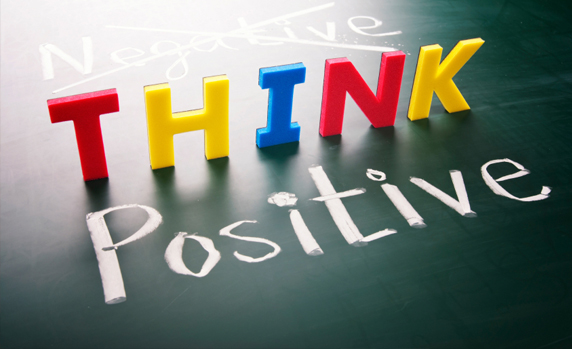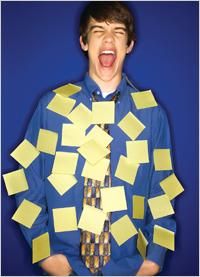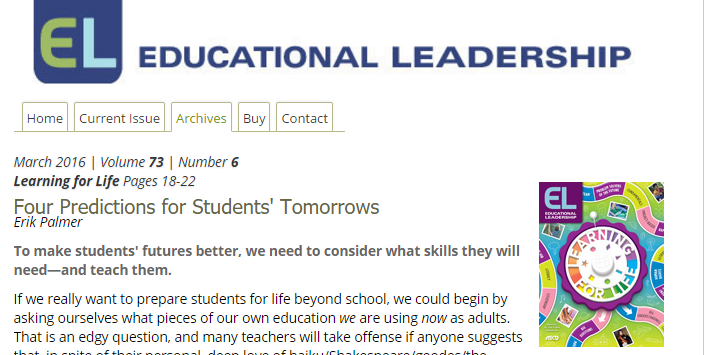 If you have attended a district training on classroom management with our amazing behavior specialists (Melisa Genaux, Brian King, and Buddy Alger), you have most likely heard the phrase: "Where attention goes, behavior grows."
If you have attended a district training on classroom management with our amazing behavior specialists (Melisa Genaux, Brian King, and Buddy Alger), you have most likely heard the phrase: "Where attention goes, behavior grows."
What does this mean though? The Tough Kid Book, by Rhode, Jensen, and Reavis, says: "If more teacher attention is given for inappropriate student behavior than for appropriate behavior, the inappropriate behavior will increase. With Tough Kids' teachers, this attention very often takes the form of excessive prompting, reminding, threatening, reprimanding, and verbal abuse, because these reactions seem to come naturally when teachers attempt 'pain control' of their own" (43).
Where is your attention going in your classroom? Are you feeding the negative actions of students and reinforcing the behaviors you don't want to see? What is your attention growing?
If you are feeling that some of these natural management tendencies (excessive prompting, reminding, threatening, reprimanding, and verbal abuse) are emerging in your teaching, maybe it is time to re-evaluate how you look at the Tough Kids' behavior. The Tough Kid Book has various strategies to try. You can access The Tough Kid Book in all JSD schools by checking with your school psychologist.
Strategies from The Tough Kid Book:
- Positive Reinforcement (45): occurs when something a student desires is presented after appropriate behavior has been exhibited. All students and adults need legitimate and appropriate reinforcement.
- Example: Calvin can earn up to ten points for completing his reading assignment correctly. The points can be exchanged for dinosaur stickers. Because Calvin enjoys the stickers he can earn, the accuracy of his reading assignments has increased.
- Motivation and Encouragement (48): motivating and encouraging desired performance is much the same in the classroom as it is in the business world.
- Step 1. Tell students what you want them to do (and make sure they understand it).
- Step 2. Tell them what will happen if they do what you want them to do
- Step 3. When students do what you want them to do, give them immediate positive feedback in ways that are directed and meaningful to them.
- Natural Positive Reinforcement (50): Natural (activities or things that students already find rewarding) forms of reinforcement are found in schools if you look for them. Some tips for selecting positive reinforcement:
- Select age-appropriate reinforcement.
- Use natural reinforcement whenever it is effective.
- Use reinforcement appropriate to the student's level of functioning.
- Make certain you have parental and administrative support for the reinforcement you plan to use.
- Avoid partial praise statements, such as "I'm glad you finished your work--finally!"
- Always make the most of opportunities to reinforce appropriate behavior.
- Be genuinely polite and courteous to Tough Kids at all times and demonstrate concern and interest toward them. Always stay calm.
- Do not confuse positive reinforcement or privileges with a student's basic rights.
For more tips and ideas, see:
Rhodes, Ginger, William R. Jenson, and H. Kenton Reavis. The Tough Kid Book. Eugene: Pacific Northwest Publishing, 2010.

 This time of year can cause stress and anxiety for teachers as they anticipate changes that will be coming in the next year. But, change isn't always a bad thing, especially if we learn to cope with it. There are various things that can be done to adjust to change and to make it an easier transition. Take these ideas into consideration:
This time of year can cause stress and anxiety for teachers as they anticipate changes that will be coming in the next year. But, change isn't always a bad thing, especially if we learn to cope with it. There are various things that can be done to adjust to change and to make it an easier transition. Take these ideas into consideration: Around this time of year, coaches and mentors may hear versions of this statement as teachers begin their end of level testing and end of year activities. "Don't bother coming in, I'm testing. You won't see any teaching."
Around this time of year, coaches and mentors may hear versions of this statement as teachers begin their end of level testing and end of year activities. "Don't bother coming in, I'm testing. You won't see any teaching."

 If you have attended a district training on classroom management with our amazing behavior specialists (Melisa Genaux, Brian King, and Buddy Alger), you have most likely heard the phrase: "Where attention goes, behavior grows."
If you have attended a district training on classroom management with our amazing behavior specialists (Melisa Genaux, Brian King, and Buddy Alger), you have most likely heard the phrase: "Where attention goes, behavior grows."